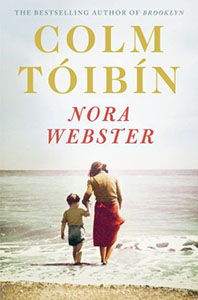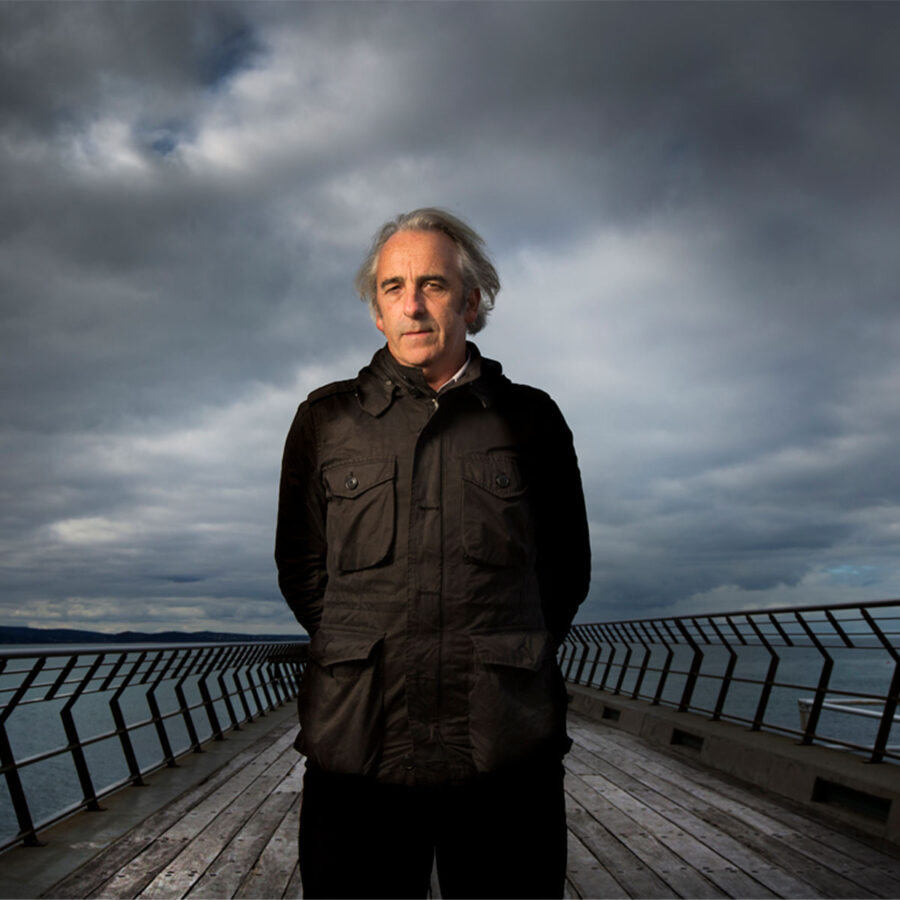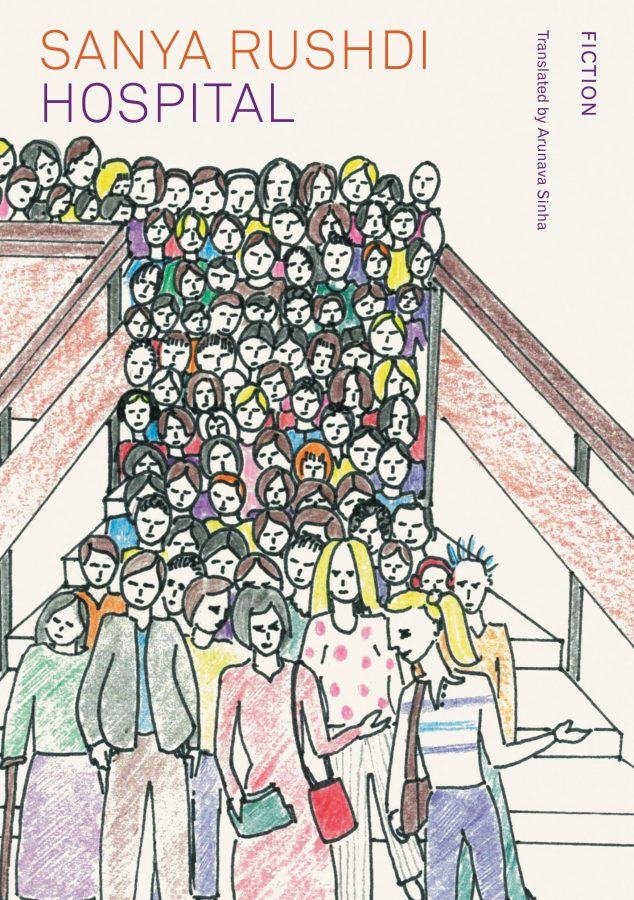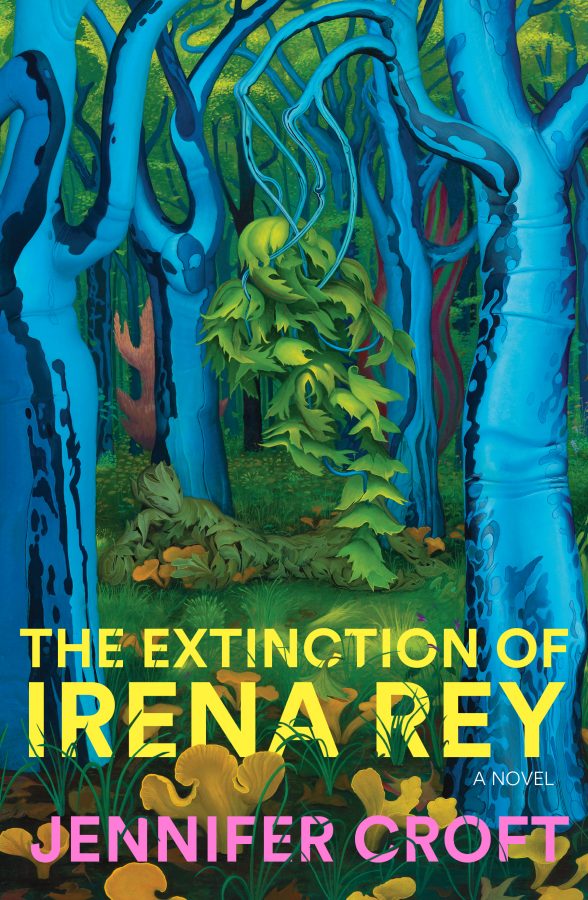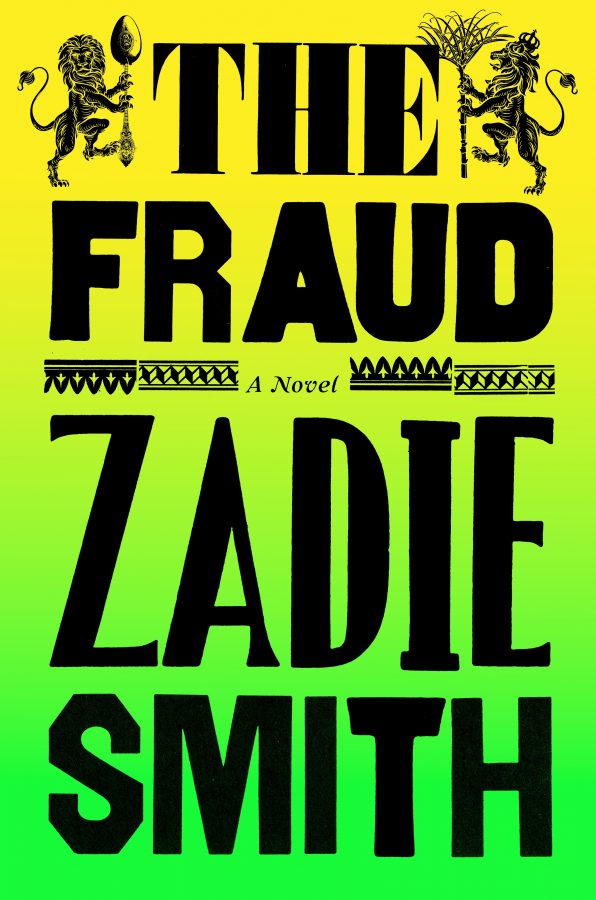It is amusing to think of Colm Tóibín and Jeffrey Eugenides being ticked off over dinner with art historians at Princeton University for, on the one hand, regurgitating social realist novels for middle-class consumers, while on the other daring to speak the ‘holy’ avant garde name of Samuel Beckett. Tóibín has told this anecdote with a degree of relish, convinced as he is, through his exhaustive reading and, in particular, his study of the exquisite dissections of Henry James, that an outwardly provocative style is not his thing. Though his new novel Nora Webster, seen through the lens of nineteenth and twentieth century ‘isms’, undoubtedly exhibits the generic traits of social realism, its plain style and its eponymous character are powerful and expertly brandished weapons. Tóibín’s friend and guide John McGahern used to laugh at what the avant garde missed in Beckett – namely, that many of his linguistic inventions were based on idioms of Irish speech. Tóibín also knows that when it comes to expressing ‘the within of things’ – to borrow a phrase from Teilhard de Chardin, the Catholic paleontologist whose influence in the Vatican II era is evident in the milieu of this book – social realism can be as sharp and as subtle a mode as there is.
After nine books of fiction and a plethora of stimulating and often personal essays on reading and writing, we know that everything in Tóibín has a lineage in his own accessible brand of literary scholarship. The title of Nora Webster rings out like an in-joke of the Irish middle class at the expense of the lacquered and iconic Anna Karenina by the socially utopian Tolstoy, and the tragically frou-frou Madame Bovary by the aesthetically utopian Flaubert. What Tóibín specialises in, most particularly in his Wexford novels – of which Nora Webster could be called the fifth, but is more properly the third, after The Heather Blazing (1992) and The Blackwater Lightship (1999) – is a stylistic faithfulness to the largely undramatic middle-class landscape of south-eastern Ireland.
Tóibín has been aghast at being mislabelled a ‘storyteller’ rather than a novelist. But the key to his rejection of the term lies not in his raised eyebrow at its folksy imprecision and New Age connotations; nor is it due to any lack of interest in the kind of oral archaeology that W. B. Yeats and Lady Gregory undertook on the west coast of Ireland in the late 1800s. Rather, it lies in Tóibín’s particular emphasis on the pact of solitude between the main protagonist and the reader of a novel. This solitude involves the kind of escapism that the Princeton art historians were looking down their nose at. Nowhere in Tóibín is there any arch repudiation of the kind of vicariousness long associated with the reading of novels. This is one of the readerly zones he has explored in his essays, in which he has reflected on the ingredients of his own sensibility, picking up the quieter, less dipsomaniacal strands of the Irish tradition – McGahern, John Synge, Mary Lavin – in order to clarify the thorough fidelity required of work in the wake of modernism’s split atom. Tóibín’s quest, in surveying the literary gods, has been to rehaunt his fictional county of hushed, anti-touristic landscapes, with its vulnerable women who nevertheless suffer no fools, and its men who are benevolent and intelligent, yet often attenuated. In doing so, he has gone a long way towards reorienting the Irish canon towards these ‘quiet’ writers, an act as rebellious and historically necessary as the noisier experiments of the avant garde.
*
Nora Webster is a case in point. In fact, it may well be Tóibín’s most effective case yet. For one, the major event of the novel – the death of Nora’s husband Maurice – happens before it begins, precluding any easy cinematic tropes and allowing us, in a narrative simulation of ‘big bang’ cosmologies, to begin after the beginning, as it were. In this sense, but in this sense only, Nora Webster is a naturalistic novel.
It is the late 1960s. Nora is in her house, in an ordinary Enniscorthy street, with the two youngest of her four children, Donal and Conor, who are still heavily reliant on their ‘mammy’. People are disingenuous in Enniscorthy, as they are everywhere, but this is not to be held against them. In the opening pages, two people come to the door who are not seen for the rest of the novel. The first is Nora’s immediate neighbour Tom O’Connor, who is there to sympathise. It is clear that Tom is keeping a close watch on every well-meaning step that approaches Nora’s house, but as he consoles her – not about Maurice’s death, but about the glut of mauldlin condolences it has triggered – he lays his superiority on just a little too thick. She can’t wait to get back into the house and away from him.
The second knock on the door comes from someone we have met before: the widowed mother of Eilis Lacey, the heroine of Tóibín’s Brooklyn (2009). May Lacey – ‘the little woman who lives in Court Street’, whispers young Conor – has come in the sympathetic mode but on a pragmatic mission. She wants to know if Nora is planning to sell the holiday house on the coast at Cush now that Maurice has died. The implication is that with the loss of income it may be a necessity. May’s son-in-exile, Jack, whose repressed nostalgia for Ireland is also familiar to us from Brooklyn, wants to know.
As it turns out, the selling of the house at Cush, not far along the strand from the Redmond’s house in The Heather Blazing, and just along the coast from the house where the Devereauxs came to nurse Declan in The Blackwater Lightship, is exactly what Nora decides she must do. And so we are introduced to the widow as a pragmatist, with the burden of solitary decisions to make and surrounded by cloying propinquity at every step.
Like their mother, the boys Donal and Conor are terribly afflicted by their father’s death, but in different ways. Donal has developed a stammer. Conor, the youngest, with ‘his sweet loyalty, his open need to be taken care of’, is a lightning rod for the love and affection grief stirs up. He is extroverted, but he is not blithe; he is too conscientious for that. Despite his chattiness, he too is shouldering a heavy load.
Like Maurice in the novel, Tóibín’s father Michael was an Enniscorthy schoolteacher, an active member of Fianna Fail, and a local historian. Michael Tóibín died young, in 1967, when Colm was twelve, about the same age as Donal. The young Colm also had a stammer. This goes part of the way to explaining the unnerving accuracy of Tóibín’s habitation of Nora’s parenting-mind, but not all the way. Only some of us, after all, can remember the precise and often quite unmusical manner in which the anxious family dialogue of childhood breathed, the way the whole fate of the world seemed to, and did, hinge upon an empty hallway, an emptier back room, or a front porch of anxiety. But even fewer are able to represent it in a way that is not excessively dramatised, but has the incremental anguish of a genuinely autochthonous novel. Robert Lowell’s remark on poetry is transferable here to Tóibín’s prose: ‘A poem is an event,’ Lowell wrote, ‘not the record of an event.’
There is a sense in which The Master (2004), Tóibín’s novel about Henry James, and The Testament of Mary (2012), his novella about the mother of Jesus, both of which are remarkable achievements in themselves, have been ideal preparations for Nora Webster’s inhabiting of the house where the formative loss of his life occured. Tóibín’s immersion in James has helped him accumulate the tools of a fastidious yet empathetic craft, while his depiction of a loving but caustic and telluric Mary has prepared him for this novel, in which Tóibín witnesses his own grief as a teenage boy through the inner-workings of a bereaved mother’s mind.
We are privy to no-one’s thoughts but Nora’s. The effect is excruciating. We worry along with her about just how broken and fragile Donal and Conor might be, particularly Donal. This anxiety about the wellbeing of the fatherless boys is the book’s narrative engine. Tóibín repeatedly withholds the consequences of Donal’s vulnerability while sounding a note of impending doom. Nora’s imperfect yet instinctive empathy will be broken into pieces; as it is, she is straining, oscillating between strength and passivity, holding things together, barely managing to interpret the silences, the boys bewilderment, the girls’ burgeoning adulthood and their desire for a frank and mature flow of information.
Through the patronage of his aunt and uncle, Margaret and Jim, Donal is encouraged in his interest in photography. He finds his distance from the traumatised household in the darkroom Margaret has built for him under her stairs. But have his affections been hijacked by his aunt? Will he come to some harm there, as he did when his stammer developed, while he was staying with Aunt Josie as his father was dying? Will he remain forever distant now, from both his mother and his own grief? Will he twist and distort in all that developing darkness? Nora feels his distance and we feel it too. When, through the neighbourly orchestrations of Enniscorthy, Nora is offered a job in the office of a local family business, Gibneys, where she had worked before she was married, the problems and anxieties are compounded. The boys come home after school each day to an empty house. We are not only led to worry about what will happen to them in those intervening hours; crucially, we intuit how formative these days and weeks may eventually become. Their father is dead, but still everywhere present in the house; their mother is alive, but too often absent.
*
It was while revisiting the work of Thom Gunn, not long after the poet’s death in 2004, that Tóibín experienced a breakthrough in his approach to such personal material. He had previously ascribed the rapport he had always felt with Gunn’s work, particularly the intensity with which he read him as a teenager, to the fact that they were both gay. In his book of essays on gay writers, Love In A Dark Time (2002), Tóibín reports that he had come to the same conclusion about the affinity he had felt as a teenager with the work of Elizabeth Bishop, Thomas Mann and James Baldwin. But in a lecture he gave in Key West in early 2013, he described how, as he stood among his books, comparing certain disclosures Gunn had made about his mother’s death in an interview with certain lines of Bishop’s, the penny finally dropped. All of them – Tóibín, Gunn, Bishop, Mann and Baldwin – had lost a parent in their childhood or early adulthood. In the case of Gunn and Bishop, they, like Tóibín, had never explicitly written about the event or the pain it had caused. Instead, they had chosen to carry the grief under their work like a submerged moon, always at a distance and in shadow, but present in every beam, every burst and caesura of their style. As Tóibín stood by the shelves, book in hand, he understood that it was on the battlefield of grief versus reason, rather than that of marginalised sexuality, that he related to these writers.
It is in light of this realisation that Nora Webster should be viewed as an apotheosis. With this novel, we can no longer avoid the clarity of Tóibín’s project, in which the parabolae of self and art, the workings of the ordering mind, the tragic spirit, and the always enigmatic engines of invention and remembrance are in perpetual and conscious interplay. As a craftsman, Tóibín is able to cross the divide, to turn himself inside out, to surrender his own terrible experience to a delicately registered historical narrative about the Irish middle class. He has fictionalised his home landscape many times before, but always with the undertow of that submerged moon. As with Bishop and Gunn, this withholding has given him power as a writer. With Nora Webster, he has gone ‘out to the hazel wood’, as it were, to sing up this key source of his power and place it squarely onto the page.
When Nora takes the office job at Gibneys, she enters into what is essentially a provincial fiefdom. The Gibneys’ family business is rigged with lineage and generational obligation. It is overseen by obsessive mercantile men, but underpinned by dynamic, even shamanic, women. Nora’s quietly patrician social persona emerges in a way that recalls a sentence from Tóibín’s memoir, A Guest At The Feast (2011), in which he describes his mother as having performed ‘a lifelong imitation of an ordinary woman’.
As the novel moves out of the house and into the town, the action becomes weighted, not with only a personal past, but a collective or tribal history. These collective layers are both explicit and implied, real and imagined. In the same way that, in Brookyln, Enniscorthy is depicted as a foundry of accent and lore on the old side of the Atlantic, the pre-Christian matriarchy of the Sidhe makes itself felt in Nora Webster through the power of nuns and aunts. Tóibín has thought a lot about the role of aunts in the literature he loves, and he is famously good at female characters. Nora’s and Maurice’s sisters play a potent role in the novel. But when Nora’s trouble at Gibneys ignites, it is not an aunt but a nun who has the freedom and, crucially, the knowledge to help her. This nun, Sister Thomas, wields a decidedly practical yet almost thaumaturgical power.
At the peak of the conflict with her immediate boss, Francie Kavanagh, Nora storms out of the office with a pair of scissors in her hands. She finds herself out at the coast near the old holiday house at Cush. A thick sea-fog has descended. As she parks her car, she thinks of the day long ago, almost in another lifetime, when she and her friend Greta had mocked Francie for her rustic rough edges. As Nora steps across the stones near the river and onto the strand, she also remembers the shocking pain Maurice experienced in the days before he died: his moans could be heard through the hospital. Sister Thomas was there saying prayers, Jim and Margaret too, and ‘old Father Quaid’. As ‘the luminous grey-whiteness was moved down the strand by the mild wind towards Curracloe’, she sees through the fog a nun on the beach. As she draws closer, she sees that it is Sister Thomas. The nun commands Nora to return to town. She tells her that the Lord has been watching her, and that ‘the boys will be home from school waiting for you’.
‘He has not been watching over me!’ Nora declares. ‘No-one has been watching over me!’ The defiance is loaded with modernity, independence and awful pain, but the nun and the fog translate the conversation into the dialect of the sacred. ‘We walk among them sometimes,’ Sister Thomas tells Nora, ‘the ones who have left us. They are filled with something that none of us knows yet. It is a mystery.’
Crucially, the preternatural atmosphere of this meeting has a corresponding ground in reality. There are old debts to be repayed in the town and Sister Thomas has leverage with the Gibneys. She will see to it that Nora has what she requires to continue working in the office, including the reigning-in of Francie Kavanagh. The omniscience of Sister Thomas, with its Mafia-like implications, is in fact the product of the nun’s role as a consecrated counsellor for a community of women deeply invested in the social architecture of the Catholic faith. Sister Thomas indeed works on another plane. For decades she has been privy to the private motivations of the town, not so much because she is holy, but because she was long ago ordained in the role of being so. In Tóibín, the reality of this socio-religious contract is not employed as a denigration or cancellation of faith’s possibilities. Rather, it has a matrilineal feel and, as such, is presented as a psycho-geographical fact of his home county.
Not long after the meeting in the sea-fog, the nun turns up at Nora’s door to explain the mechanics of what she has arranged and how it all will work. Nora is caught out. ‘I don’t like people knowing my business,’ she tells Sister Thomas. ‘Your mother was the same,’ the nun tells her:
I knew her when she sang. She was a wonderful singer, but it was the pride, or the not liking people knowing her business, that made her difficult. And that did her no good. Now, you are more practical. And we should be grateful for that.
If the novel has a turning point, this is it. Like most tribal Catholics, Nora is neither pious nor atheistic, but she does, through her cultural inheritance, have knowledge of a metaphysical landscape. After her exchange with Sister Thomas, her life begins to find its bearings in exactly that terrain. There is no evidence in the novel of her having any personal conversation with a deity, but through the nun the consolation of the vernacular church surrounds her, as much through its practical applications as its broader spiritual implications.
*
Well over 100 years ago, W. B. Yeats envisaged a future for Ireland in which writers such as Tóibín and John McGahern, William Trevor and Claire Keegan, would come to the fore. Famously ambivalent towards the rising middle classes, Yeats wrote in an overview of Irish writing in 1891 that, despite a willingness to ‘cloak all unpleasant matters’ and to ‘moralise with ease’, the new middle class voice, represented at the time by Gerald Griffin, nevertheless possessed a ‘sense of order and comeliness that may yet give Ireland a new literature’.
In Nora Webster, it is as if Colm Tóibín has set to the task of resolving Yeats’ caveats and perfecting this ‘new literature’. He is undoubtedly fascinated by the ‘order’ of which the poet spoke, and the ‘comeliness’ we can rescue from redundancy by replacing it with ‘quiet’. But to understand and appreciate the importance of Tóibín’s work, it is necessary to consider the final technical achievement of the novel. Having immersed us in the solitary run of Nora’s mind, having led us out of this privacy into the challenges of her exposure in the small circle of Gibneys, the novel extends its circumference to the wider nation and the dramatic and violent events in Derry on Bloody Sunday, 1972.
As reports come through of the slaughter of innocent people by British soldiers during the civil rights march, Donal photographs the events as they appear on the television screen. This penchant for photographing significant events on television, Nora suspects, is an obsessive transference of his grief – or is he merely ‘bright’, as the Irish Catholic middle class like to say of their children? The following day in Dublin the British Embassy is burned down by protesters. Donal and Conor’s elder sister Aine is confirmed as having been on the picket. She goes missing for days afterwards. The hesitant beginnings of Nora’s personal recovery are suddenly at risk.
The novel captures the national mood, its real-time anxiety, its live immediacy. The burned Embassy was on Merrion Square, where Maurice and Nora had their honeymoon. She points this out to the boys as images flash up on the screen, and the detail brings the drama home to them even more. The public and private worlds are intertwined. There has been enough loss in this house in the normal course of life and death without this. As the days unfold, concern about Aine’s disappearance converts infamous events into a closely felt crisis. Through an expertly honed intimism Tóibín has anchored us in the heart and mind of one woman, transforming a distant historical event into the lived experience of brutality, disturbed sleep and gut-twisting worry it was for those involved.
Intrinsic to Tóibín’s work, from The South (1990) and The Sign of the Cross: Travels in Catholic Europe (1994) through to Nora Webster, is a social realist reformulation of what were known in Catholic circles, once upon a time, as ‘holy mysteries’. You will find no cheap irony in Tóibín about this. He has made himself a conduit for the concept, with its rootedness in ordinary human failure, loss and vulnerability. In his renderings of modest regional lives, he delineates the psychological and generational processes by which the numinous seeps in, how the ghosts come, and how it is the ghosts’ right to come, whether you believe in them or not. These are the players and this is the stage; these are the cadences, not of anything as immaterial as the spirits themselves, but of a culture in which the spirits have been given a voice and shape, on an island where visions and beliefs beyond rationality have always crept in.
When Aine is discovered safe and sound, Nora is released. The ghosts of her own mother and her marriage begin to take up their positions in her mind. These final pages are both haunting and realistic. As with grief, this is never just a matter for the individual in isolation. There are afternotes ringing in the eaves, qualifying chambers under our feet. The same can be said of the novel form itself when in Tóibín’s hands.
Colm Tóibín is doing the work that the often rowdy history of his people has made most necessary: the close, quiet, and realistic work for which even the heraldic, aristocratic-minded Yeats had such hope. In the wake of centuries of dispossession and violence, the value of this project is not to be found in recidivist reflections on the peculiarly Irish nature of Tóibín’s genius. Rather, it lies in understanding how indispensable to his fiction is the prolonged and faithful study he is making of his native culture. In this, he is both a universal and a superbly grounded writer who understands how modern psychologies morph and conform in the context of local and metaphysical traditions. As such, he will always be looking back, even as he writes us into the future.
